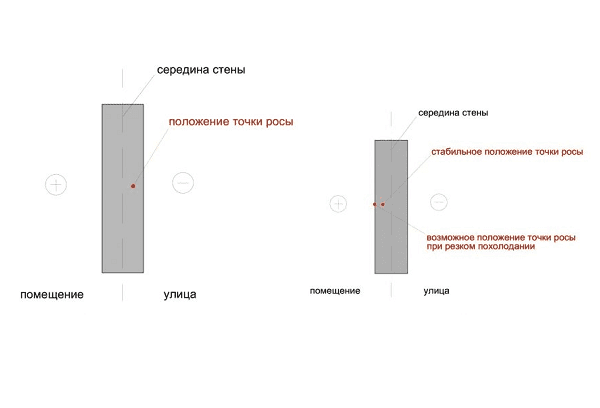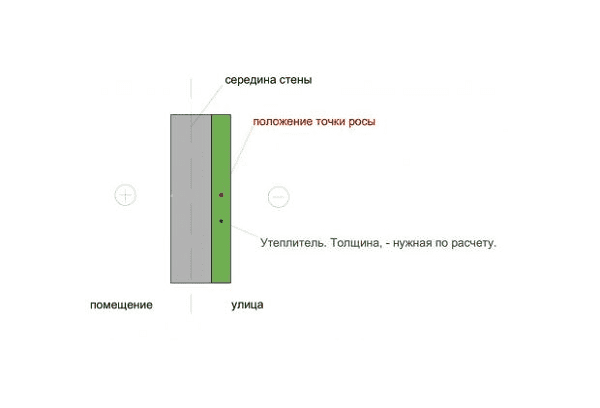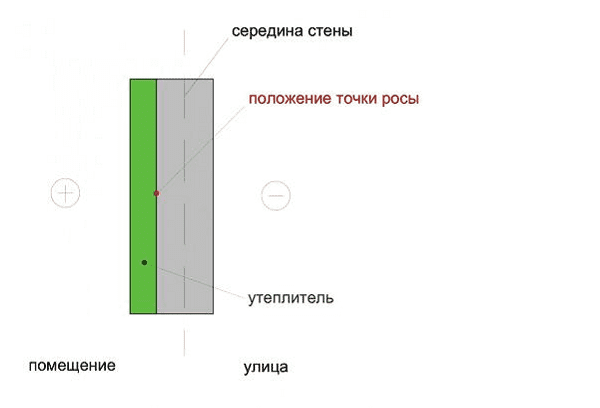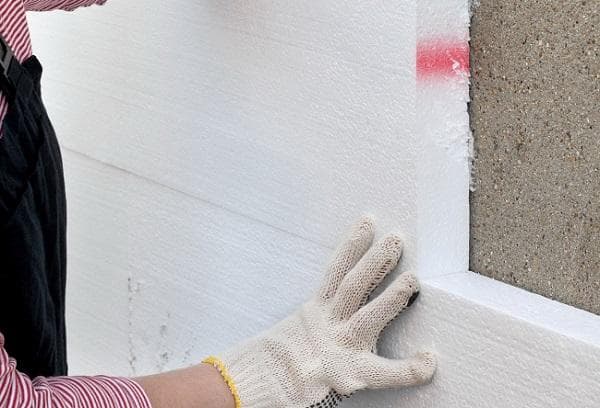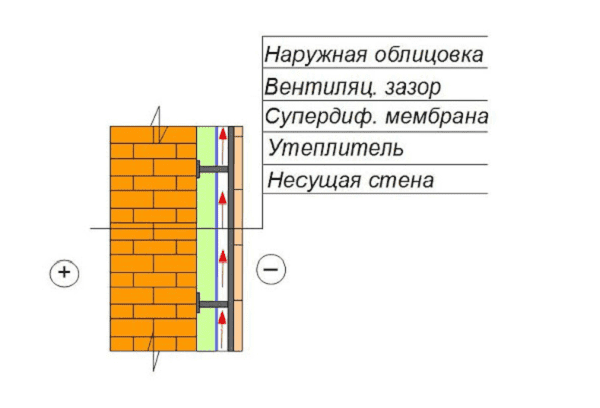“Hello, fungus!”: about insulating walls from inside the house
Insulating walls from the inside is cheaper and easier. At first glance, there is only one drawback to such insulation. The area of the room becomes smaller by a dozen or two centimeters. But if the room is large, why not? “It’s still not possible,” say experts. And the point here is not at all in the precious centimeters of living space, which many are ready to part with.
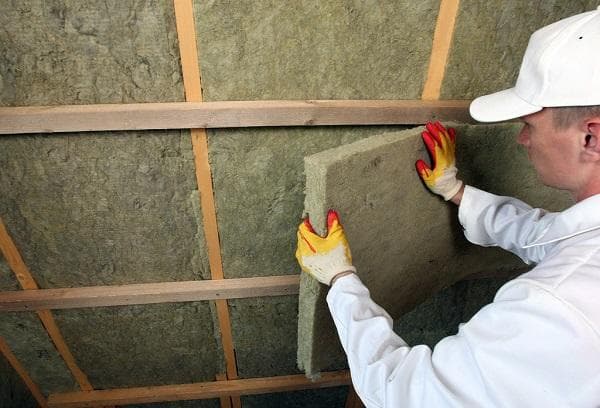
Insulating walls from the inside is a direct path to dampness and mold in the house!
3 facts against
Without the financial ability to hire craftsmen and insulate the walls from the outside, many decide to take the easy route. Foam and penoplex boards are available. And how easy they are to install! I coated the tiles with glue and stuck them on the wall. Then another. And so on from bottom to top. The voids are filled with polyurethane foam. A couple of hours and the apartment is warm. Negative consequences do not reveal themselves immediately.
After improper insulation of walls in severe frosts, you can observe small puddles near the baseboard. Condensation formed between a completely frozen wall and warm foam flows down microcracks. Dampness appears, and along with it the house is attacked by fungus.
Dew point shifts
“Dew point” is a term associated with steam condensation. Water is the source of life on Earth and surrounds us everywhere. If water doesn't flow, it doesn't mean it doesn't exist. It hovers over a boiling kettle, a steam generator. Water is present in the air that a person exhales.
Like all gases, water vapor has a partial pressure.That is, he presses on the wall with a certain force. If the pressure force inside and outside is the same, the steam does not move anywhere. But as soon as he “feels” that it is dry and cold nearby, he will immediately rush there. At the same time, as it cools, it will turn into a liquid state.
Dew point is the temperature at which steam becomes water (condenses). This can happen on the outside, inside or in the center of the wall. Accordingly, droplets of moisture appear indoors, outdoors or directly in the wall. The dew point depends on the humidity and temperature in the room.
At +20℃ and 60% humidity, steam will turn into water at a temperature of +12℃. At the same temperature and humidity, 40% moisture droplets will appear in an area cooled below +6℃. In an ordinary, uninsulated wall, the place where condensation forms is located approximately in the center. If it gets sharply cold outside, the wall freezes deeper and the dew point moves indoors. Then we see dampness and mold.
With external insulation, the wall becomes warmer, and condensation forms closer to the street.
When insulating from the inside, everything happens exactly the opposite. Heating devices heat the insulation. That's why the house is warm. Meanwhile, the wall freezes to a great depth. The dew point is located just between it and the polystyrene foam, which is most often used to insulate walls.
Many people see the solution to the problem as creating a ventilation gap between the wall and the insulation. Allegedly, when air moves, the condensate will dry out. Indeed, this is what happens. But at the same time, installation becomes much more complicated, and the room becomes even smaller.
Polystyrene foam is fire hazardous
The slightest spark in the wiring, and the apartment, lined with insulation from the inside, will burst into flames like a match!
And if it doesn’t catch fire, the whole family runs the risk of getting burned from toxic substances released during combustion. The fact is that polystyrene foam and penoplex are combustible materials (G3 and G4, respectively). Poets treat them with fire retardants - substances that do not burn. But there is one “but”. When heated above +70℃, impregnated insulation releases poison. In addition, they smolder excellently.
The wall is not breathing
Many people do not think about the fact that walls tend to “breathe”. That is, letting steam through. That is, remove excess moisture from the air. To understand why this is necessary, try spending a day in a wooden or brick house, and another day under a glass bell. The comparison is rough, but still.
By insulating a house with polystyrene foam, we lock moisture into the room and turn it into a sauna. It's good if the ventilation works properly. Then the water vapor successfully finds a way out. But if the room is poorly ventilated or not ventilated at all (and this often happens in old houses), it becomes not very comfortable to be in the room. Plus, the windows sweat and the walls become damp (for reasons not related to the shift in dew point).
How to insulate walls correctly?
Insulation is installed only on the outside of the walls!
And this needs to be done correctly. There are many nuances. One way or another, any intervention will affect the microclimate in the house. It is important not to upset the balance.
- Make sure that the walls are smooth and free of voids. Such zones freeze faster and, accordingly, condensation forms in them.
- Correctly calculate the amount of insulation. Its thickness should be sufficient for the dew point to move to the middle of the insulation. If the dew point is at the point of contact between the insulation and the wall, condensation, unable to find a way out, will saturate the wall.A wet, warm wall is not only a fungus’s favorite treat, but also a direct path to the destruction of the building.
- Select insulation individually, according to the material and thickness of the walls, climate in the region, temperature and humidity in the room. For example, a 40 cm thick brick wall will require more insulation than a 40 cm foam block.
Proper insulation of walls implies the creation of a “pie” that will “breathe”, that is, due to partial pressure, remove excess moisture. The dew point should be in the middle of the insulation outside the house.
An example of proper insulation:
Questions and answers
Question: Can insulating walls from the inside be successful?
Answer: Maybe. But in exceptional cases. To do this, 8 conditions must be met. They live in the premises permanently. Ventilation is carried out according to standard. Heating too. All structures are insulated. The wall is thick and warm. According to calculations, no more than 50 mm of foam is required to insulate it. Heat transfer resistance is less than 30%. In simple terms, in a warm region with good ventilation and heating, in a residential building with thick walls, you can insulate the walls from the inside!
Question: What can be done if the walls have already been insulated from the inside?
Answer: First of all, it is necessary to establish ventilation (check and clean the hoods). Plastic windows should be opened for ventilation for at least half an hour a day. An additional heating source will also help reduce condensation. However, it is important to understand that the problem will completely disappear only after proper insulation of the outside walls of the house.
The consequences of improper wall insulation are not immediately noticeable. At first the house is warm and, at first glance, dry.Residents of the house discover the appearance of fungus approximately 2-3 years later, when it covers a significant area and spreads to the finishing. Typically, bursts of mold activity occur during the cold season, when large temperature changes occur. An attempt to save money turns into a complete failure. We have to redo everything “according to our minds.” That’s why they say that insulating walls from the inside is a disastrous business.
